The latest series of ┤¾¤¾┤½├¢ Three contest Glow Up had more applicants from the make-up talent of the future than ever before.
When the show returns for its third run, 10 competitors will compete for a contract to work alongside some of the worldÔÇÖs biggest make-up artists. Before that can happen, they must impress in a series of challenges, which include studio photo shoots and prosthetic work on major TV productions.
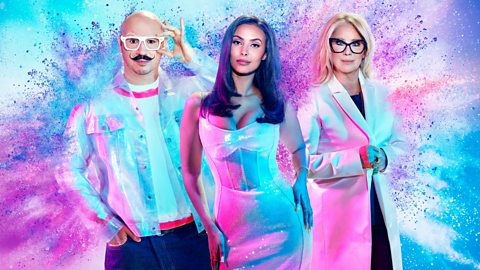
A career in the make-up industry can take its artists into some fascinating creative environments, but if you canÔÇÖt take the Glow Up route, what other ways into the job are there? Bitesize caught up with show judge Dominic Skinner to find out the paths available.
How have the routes into the make-up industry changed since you started out?
Twenty-plus years ago, there really wasnÔÇÖt the ease of using the internet. Also, there was no social media, so your ability to learn and discover the possibilities of make-up and make-up artistry was really difficult.
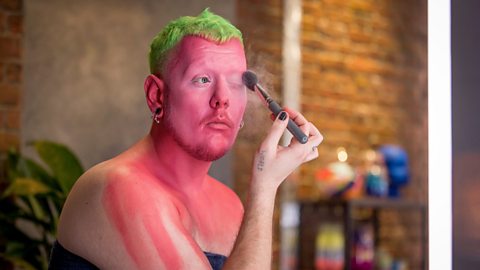
I remember going to the Citizens Advice Bureau in my local town and saying I wanted to learn how to do make-up. We went through a big book of colleges ÔÇö there were a few, but the colleges were really about prosthetic and movie make-up. I didnÔÇÖt want that, I wanted the fashion aspect. I got a place at the London College of Fashion then, after making some enquiries, moved on to their make-up course.
ThereÔÇÖs now an ocean of content available to learn from, and more colleges, including some big fashion colleges, and make-up artistry has found its way into a lot of regional colleges too. It was harder when I started, but also easier to break into the industry as there were fewer people trying to do it. Now, there is more accessibility, but thereÔÇÖs more competition.
How important would you say that formal training is?
I found it necessary. I loved my college course, it was two years, it was really broad. We did loads of different types of make-up. But we also studied photography, so we learnt about lighting and positions and colours and we had classes on styling and hair. Formal training is great, but itÔÇÖs really down to practice.
But the practicality of make-up? I learnt more in the first six months working on a make-up counter than I did throughout the whole two years at college. That was all down to practice and you can do that at home, on friends, family, anyone. I wouldnÔÇÖt say one is better than the other, but I feel like, nowadays, formal training is less necessary.
Go to a college that not only teaches make-up, but creativity and individuality. That is how you build up a make-up career, how you stand out and how you bring something to the table.
When people are starting out, they may not have the biggest budget for make-up. WhatÔÇÖs a good, basic toolkit for beginners?
If youÔÇÖre on a budget, the worst thing you can do is buy cheap. Cheap may get you more but itÔÇÖs not going to last and itÔÇÖs not going to be good quality.
That doesnÔÇÖt mean you have to spend ridiculous amounts of money, but you need to be sensible about what you get.
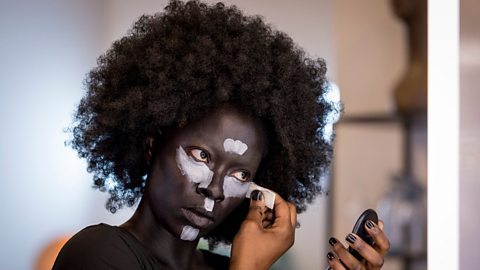
Things like eyeshadows, lipsticks, blushes ÔÇö you want things that have really good pigment. The stronger the pigment, the better. It means you can get really solid, dense colour, but you can also apply it very lightly and get a sheer colour as well.
When it comes to foundations and concealers, you donÔÇÖt necessarily need a lot of colours ÔÇö you need a couple that are really dark, a couple in the middle, and then you mix and match, you mix a couple of different colours to get the one in between.
A good tip is to get a couple of fashion magazines, look through the make-up and make a note of what youÔÇÖre seeing, because thatÔÇÖs probably what youÔÇÖre going to be asked to do for the next year.
When I started, I did buy a lot of cheap stuff. And it just sat there, because it was more gimmick over quality. Whereas, I bought a really classic, red lipstick from a professional make-up store and I used it down to the nib. It was perfect, with the deepest pigment, it worked everywhere.
What level of initiative do you look for in someone who is starting out?
If a creative person hits a brick wall, theyÔÇÖll find a solution. TheyÔÇÖll either dig under it, or theyÔÇÖll bulldoze it down. Someone who isnÔÇÖt creative may get stuck.
As a make-up artist, youÔÇÖre up against problems constantly. You have to have a filing cabinet of ideas [in your head]. TheyÔÇÖre talking about three looks on a shoot, so I come up with three looks. Then all of a sudden itÔÇÖs another look, and another, until youÔÇÖre up to seven looks. I could say, ÔÇ£No, youÔÇÖve got your three, thatÔÇÖs it.ÔÇØ But you canÔÇÖt. You have to find ideas.
I was doing one show where they wanted a certain colour of lipstick. I then went to the store to buy 13 of these lipsticks for the rest of the team and theyÔÇÖd completely sold out. So I had to make the colour myself. I got all sorts of other products and played around with them until I found it. IÔÇÖve also found myself customising sets of lashes the night before a show to look like other ones as they were 30 short of the 100 required. There will always be these problems, but youÔÇÖve got to find the solutions.
Finally, could you share a make-up hack with Bitesize?
DonÔÇÖt ever look at a make-up product for what itÔÇÖs designed for.
Look at it in terms of colour and texture. Think where else it could go on the face. One of my favourite things when IÔÇÖm doing a beauty look, thatÔÇÖs really quite quick and simple, is that I will put the lipstick on the model and, in pre-Covid times, I would get them to kiss the back of their hand.
Then, you rub that and put it on the cheeks, then you might get a little bit more and pop it on the eyes. Then you get a monochromatic look. Those looks are on trend, they will always look cool and fashion forward. No matter what lipstick colour you have, if you marry it to the cheek and the eye, it will always look amazing!
You can follow the latest series of Glow Up on ┤¾¤¾┤½├¢ Three and ┤¾¤¾┤½├¢ iPlayer from Tuesday 20 April.

Annie: hair and makeup junior video
Annie Little worked as a hair and makeup junior for Small Axe on ┤¾¤¾┤½├¢ One.
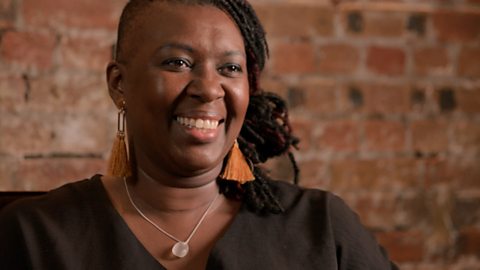
Jessica: makeup brand founder. video
Jessica founded an inclusive makeup brand.
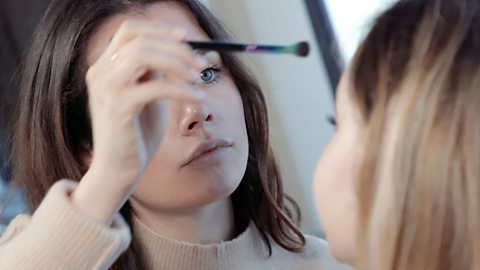
Amrita: prosthetic makeup artist
Amrita's a prosthetic (or special effects) makeup artist who's worked on films and TV shows.
